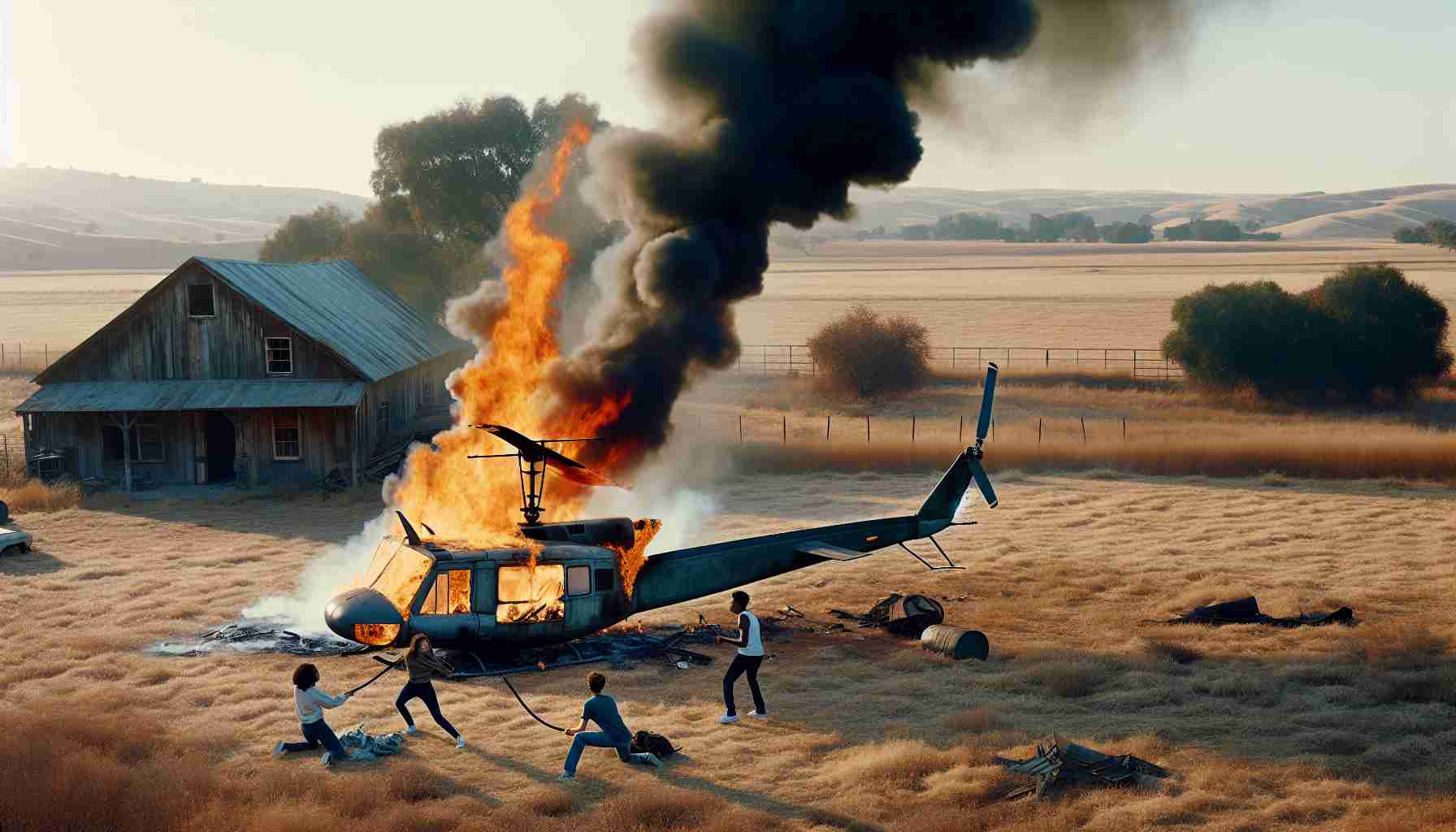In an unexpected turn of events, two young individuals were reported to have infiltrated a closed ranch in a remote area on the outskirts of a small town. The duo, identified as Tim and Sam, allegedly ignited a private helicopter on the property, resulting in significant damage to the aircraft.
Accounts reveal that the teenagers gained unauthorized access to the secure premises by circumventing a fence barrier during the late hours of Tuesday, displaying a reckless act of audacity. Following the incident, they hastily departed from the scene through the same point of entry.
Surprisingly, it was disclosed that the pair had received instructions via a messaging platform to carry out the destructive act, with a substantial monetary reward promised upon completion.
Despite their attempt to flee, the youngsters encountered a mishap that led to severe facial injuries. The local emergency services were promptly alerted by the teens themselves, and they were swiftly transported to a nearby medical facility for treatment and evaluation.
The aftermath of the incident left the helicopter in an almost irreparable state, only preserving its tail section intact. This particular model, recognized as one of the most widely utilized helicopters globally for various purposes, has a rich history dating back to its introduction in the early 1960s.
Teenagers Set Helicopter Ablaze at Closed Ranch
In the recent case where two teenagers set a helicopter ablaze at a closed ranch, there are several additional facts which shed light on the incident that transpired. The most important questions surrounding this event include the motives behind the teenagers’ decision, the potential consequences they may face, and the implications for the ranch owner and the broader community.
The teenagers’ action raises questions about their motivations and influences. Were they coerced or incentivized to commit this vandalism, or was it a result of reckless behavior? Uncovering the underlying reasons behind their actions is crucial in understanding how such incidents can be prevented in the future.
One key challenge associated with this event is the issue of security and surveillance in remote areas such as closed ranches. How can property owners better protect their assets from unauthorized access and vandalism, especially by young individuals seeking thrill or monetary gain?
The involvement of a messaging platform in instructing the teenagers to carry out the destructive act introduces a new dimension to the incident. What measures can be taken to address the misuse of communication channels for illegal activities, especially when targeting impressionable youth?
Advantages of addressing such incidents promptly include sending a strong message about the consequences of unlawful behavior and deterring others from following suit. Prompt response from local emergency services also ensures that individuals involved receive necessary medical attention and prevents further escalation of the situation.
On the other hand, disadvantages of such incidents are the damage caused to valuable property, potential legal repercussions for the perpetrators, and negative impact on the reputation of the location or property targeted. Rebuilding trust and repairing the damages incurred can be a lengthy and costly process.
For more information on ranch security and preventing vandalism, visit Example Domain. This resource provides valuable insights into safeguarding remote properties and managing risks associated with unauthorized access.
